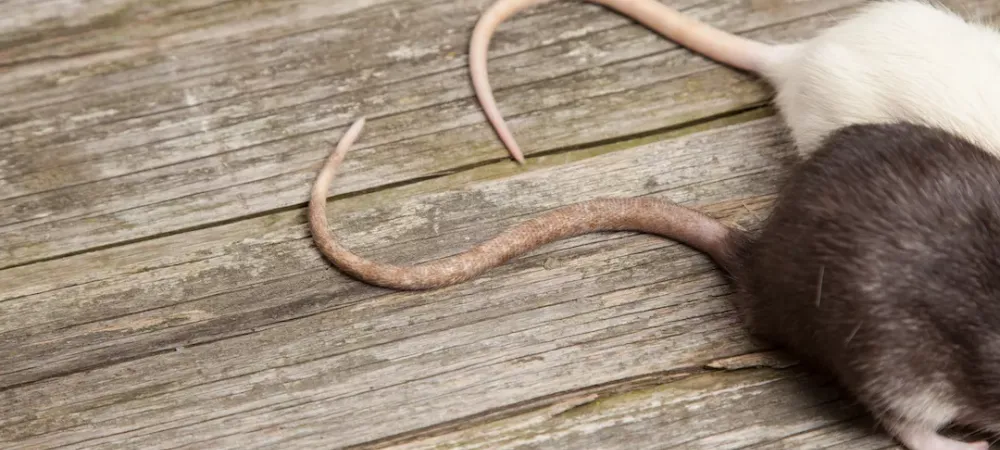Common Types of Rodents in Washington DC

Rodents can wreak all sorts of havoc—from spreading disease to damaging property—making it essential to familiarize yourself with the kinds of rodents that infest homes. Read our guide to learn about the species that take up residence in homes and how to quickly identify them.
What Is a Rodent?
Rodents are an order of mammals characterized by their larger-than-average front teeth, which they use to gnaw, find shelter and obtain food. These animals live on every continent except Antarctica and even most islands.
While the word “rodent” may bring to mind the words “mouse” and “rat,” this enormous order of animals encompasses over two dozen families and includes groups as diverse as beavers, porcupines, marmots, and chinchillas.
There are three main groups of rodents.
- Mouse-like rodents: Mouse-like rodents have long whiskers and pointed faces.
- Cavy-like rodents: Cavy-like rodents have large heads, sturdy bodies, and short tails. The guinea pig is a well-known example.
- Squirrels: Squirrels, with their bushy tails and long, flexible bodies, are a familiar sight in many parts of the world.
Rodents are generally small and tend to be prey for larger animals. For this reason, they have developed sharp senses that help them spot danger and faster reflexes that enable them to escape quickly from a dangerous situation.
For this blog, we will be focusing on two of the most common types of mouse-like rodents—mice and rats.
Mice
Mice are some of the smallest rodents, although also among the most successful. They tend to have hairless, long tails and pointed snouts. They live in a wide variety of environments, including, fields, woods, mountains, and deserts. Species like the house mouse have evolved to live together with humans, making nests in their homes and eating their food scraps. Learn how to recognize the signs of mice living in your attic.
In this section, we’ll cover the types of mice you are mostly like to encounter in your home—the house mouse and the deer mouse.
House Mice
The most common mouse type in the United States, the house mouse is only one or two inches long, excluding its tail. Although typically a grayish, brown color, many color variations exist.
The house mouse is easy to recognize by its hairless tail, which is as long as its head and body combined. It also has a blunt snout, small eyes, and big ears.
Their rod-shaped droppings measure about a half-inch in length. They prefer to feed on cereal grains, seeds, or sweets but will eat almost anything edible. They do not require much water, as they get enough from the food they eat.
They prefer to stay inside, and some house mice in urban areas spend their whole lives inside buildings. However, in rural or suburban areas, they live outside in weeds, storage sheds, and garages, but will often move inside during the colder months when food is scarcer.
You may wonder how to find mouse holes. They don’t look much like the stereotypical holes depicted in cartoons. Mouse holes, both inside and outside buildings, can be small cracks, gaps, or spaces that serve as access points to their nests.
When inside, house mice build their nests near food sources, such as under ovens or refrigerators. Every day, they make 20 to 30 visits to their food sources within their territory, which ranges from 10 to 30 feet from their nest.
They’re skilled climbers and can scale any rough vertical surface. They can also run along ropes and wire cables and jump an impressive 13 inches upward.
Deer Mice
Deer mice tend to live in more rural places, and they rarely enter homes or buildings. However, they may seek shelter indoors during the winter.
They tend to live in burrows they’ve made or the abandoned burrows of other animals, in stumps, beneath rocks, in debris, soil cracks, or any other protected place.
Deer mice measure around six inches in length, including their tail. Their upper body is usually darker and their undersides are white.
Rats
Rats are long-tailed, medium-sized rodents that belong to the superfamily Muroidea. The genus Rattus, known as “true rats,” includes different types of rats important to humans, such as roof rats and Norway rats. Below, we will discuss each species.
Roof Rats
Roof rats, also known as black rats and house rats, thrive more in warmer climates. Norway rats have largely driven them out of colder climates. However, some studies have shown that roof rats have been able to adapt to harsher, more extreme climates.
A full-grown roof rat measures roughly five to seven inches long, not including its tail, which measures roughly another six to nine inches in length. Their color ranges from light brown to black and tends to feature a lighter underside.
Roof rats usually forage after dusk, and if they cannot eat the food quickly, they’ll find a place to store it for later.
Norway Rats
Norway rats, also known as brown rats, have coarse fur that is typically dark gray or brown, and their underparts are usually brown or light gray. They are quite large, weighing sometimes twice as much as black rats and several times more than house mice. Their length ranges from eight to 10 inches excluding the tail, which measures another seven to 10 inches, roughly the same length as their bodies. Males tend to weigh around 12 ounces, whereas females weigh around nine ounces. Reportedly, some individuals can weigh as much as 25 ounces. You may have heard stories about Norway rats being as big as cats, but these are either exaggerations or confusions with other species, such as the muskrat or coypu.
Often seen in waterways and urban areas, these rats are good swimmers, sometimes even being referred to as “water rats.” They are also mostly nocturnal, becoming active around sunset when they start looking for water and food. Certain individuals may also be active during the daytime in places with high rat populations.
Norway rats, like other rodents, can carry various disease-causing pathogens, including rat-bite fever, viral hemorrhagic fever, hantavirus, and cryptosporidiosis.
Rats have exceptionally poor eyesight and are colorblind. They instead rely on their hearing, as well as their acute senses of taste, smell, and touch, to get around and find food. Therefore, for reasons of safety, it’s possible to dye bait unusual colors without deterring rats, as long as it doesn’t have a repellent odor or taste. Their excellent sense of taste allows them to detect contaminants in their food at extremely low levels.
Norway rats tend to build their nests either at ground level or in underground burrows. They line their nests with cloth, shredded paper, and other fibrous materials.
FAQ About Rodents
Here are some common questions we often get about rodents:
When Are Rodents Active?
Rodents can be nocturnal, diurnal, or active during part of the night and day.
What Do Rodents Eat?
The diets of most rodents include both animal and vegetable matter, although some herbivorous species exist as well.
How Do Rodents Impact Humans?
They’ve destroyed crops, contaminated food with their feces, caused leaks from burrowing and damaged objects by gnawing. Specific rodent species have carried diseases like plague, scrub typhus, murine typhus, rat-bite fever, tularemia, hantavirus, Lassa fever, Rocky Mountain spotted fever, and countless other deadly diseases.

